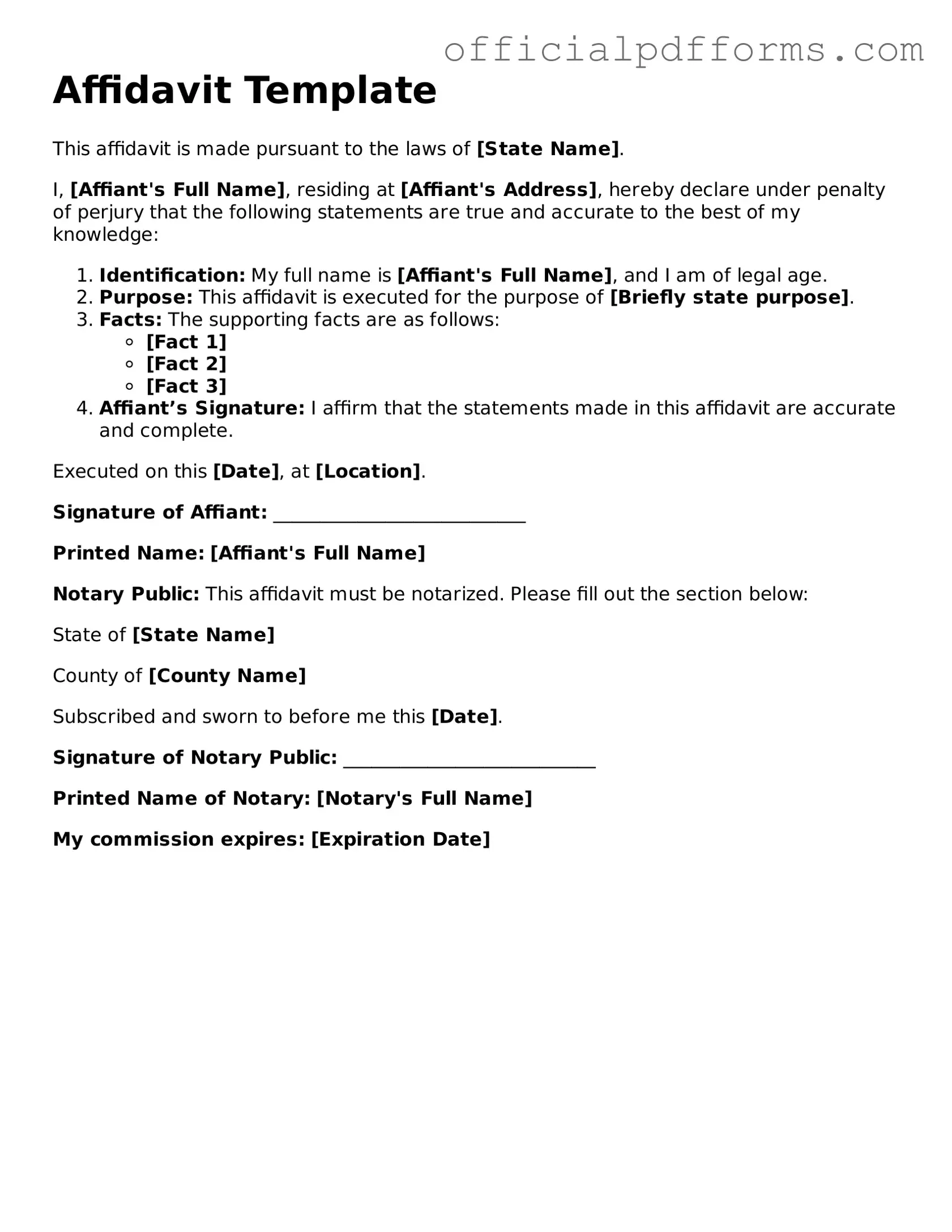What is an affidavit?
An affidavit is a written statement that a person swears is true. It is often used in legal settings to provide evidence or support for a case. When someone signs an affidavit, they are declaring under oath that the information contained within it is accurate to the best of their knowledge.
When is an affidavit needed?
Affidavits are commonly required in various situations, including:
-
Legal proceedings, such as court cases.
-
Real estate transactions, to confirm property ownership.
-
Financial matters, like loan applications.
-
Personal matters, such as name changes or guardianship issues.
In essence, any situation that requires a sworn statement may necessitate an affidavit.
Who can create an affidavit?
Generally, any adult who is competent to testify can create an affidavit. This means the individual must be of sound mind and not under duress. However, the affidavit must be signed in front of a notary public or another official authorized to administer oaths, ensuring its validity.
An affidavit typically includes the following information:
-
The affiant's full name and address.
-
A statement of facts that the affiant is swearing to be true.
-
The date and location where the affidavit is signed.
-
The signature of the affiant.
-
The signature and seal of the notary public or official witnessing the affidavit.
Including all necessary details helps ensure the affidavit is accepted by the court or other entities.
How do I sign an affidavit?
To sign an affidavit, follow these steps:
-
Read the document thoroughly to ensure all information is accurate.
-
Do not sign the affidavit until you are in the presence of a notary public.
-
Once with the notary, you will sign the affidavit, affirming that the information is true.
-
The notary will then sign and stamp the document, finalizing it.
It is crucial to understand that signing an affidavit under false pretenses can lead to legal consequences.
Can an affidavit be changed after it is signed?
Once an affidavit is signed and notarized, it cannot be altered. If changes are necessary, a new affidavit must be created. This new document should clearly reference the original affidavit and explain the reasons for the changes. Always ensure that any new affidavit is also properly signed and notarized.
Where should I file an affidavit?
The location for filing an affidavit depends on its purpose. For court-related affidavits, you typically file them with the court handling your case. For real estate or property matters, you may need to file with the county clerk's office. Always check the specific requirements for your situation to ensure proper filing.
